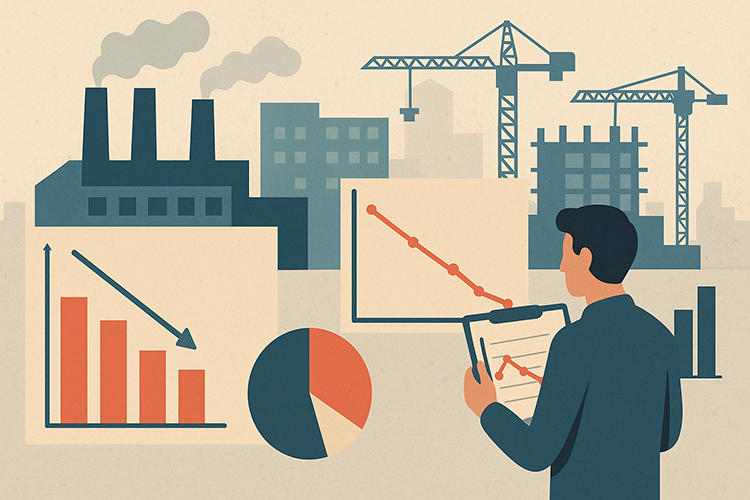Poland’s Industrial Output, Construction and Wages: Signs of Strain Amid Modest Growth
New statistics from Poland show that while some sectors are holding on to steady performance, others remain under pressure. Industrial production, construction activity, and wages in the enterprise sector are showing mixed trends, reflecting the challenges of cost pressures, weaker demand, and inflation.
According to one set of recent data, the price indices for sold production in industry (with 2021 as base year) have fallen slightly in several months of 2025 compared with the same periods in 2024. For example, in July 2025, the price index dropped by about 1.2% year-on-year and edged down versus June; a similar pattern carried into August. These declines suggest that industrial producers are facing difficulty in raising prices, possibly due to competitive pressures or lower input cost pass-through.
In the construction sector, measured by indices of construction and assembly production, there is modest growth. Data for July 2025 shows construction and assembly output up by approximately 3.2% year-on-year, though on a monthly basis the increase is smaller. However, recent quarterly reports indicate that production has varied, with gains in some periods offset by slower growth in others.
Industrial sold production (in volume terms) showed a modest increase by late summer 2025. One reading places industrial sold production about 2–3% higher year-over-year for July. This suggests that despite price softness, actual industrial activity is maintaining some upward momentum.
On the labor front, average monthly wages in the Polish enterprise sector—excluding profit-based payments—continue to rise. While Poland has already experienced strong wage growth in recent years, recent data confirms ongoing increases, though inflation and cost-of-living pressures mean real wage gains may be more muted for many workers.
The convergence of these trends paints a nuanced picture: industrial volumes are holding up, but price declines suggest that margins may be under pressure. Construction growth offers some ballast, but it is not accelerating strongly enough to offset industrial price softness. Rising wages help maintain consumer purchasing power but also add to cost pressures for businesses.
Looking ahead, key things to watch will include input cost inflation (materials, energy), external demand for manufactured goods, and how quickly the construction sector adapts to changing regulatory and cost environments (especially sustainability requirements). For workers, the important question will be whether wage growth outpaces inflation.
Poland’s economy appears to be in a transitional phase: not contracting broadly, but far from robust expansion. For now, many firms will likely face a balancing act between controlling costs and maintaining output, while households will watch closely to see if wage gains translate into improved real incomes.









